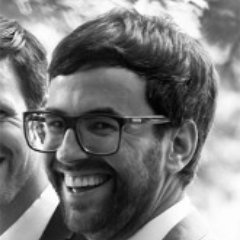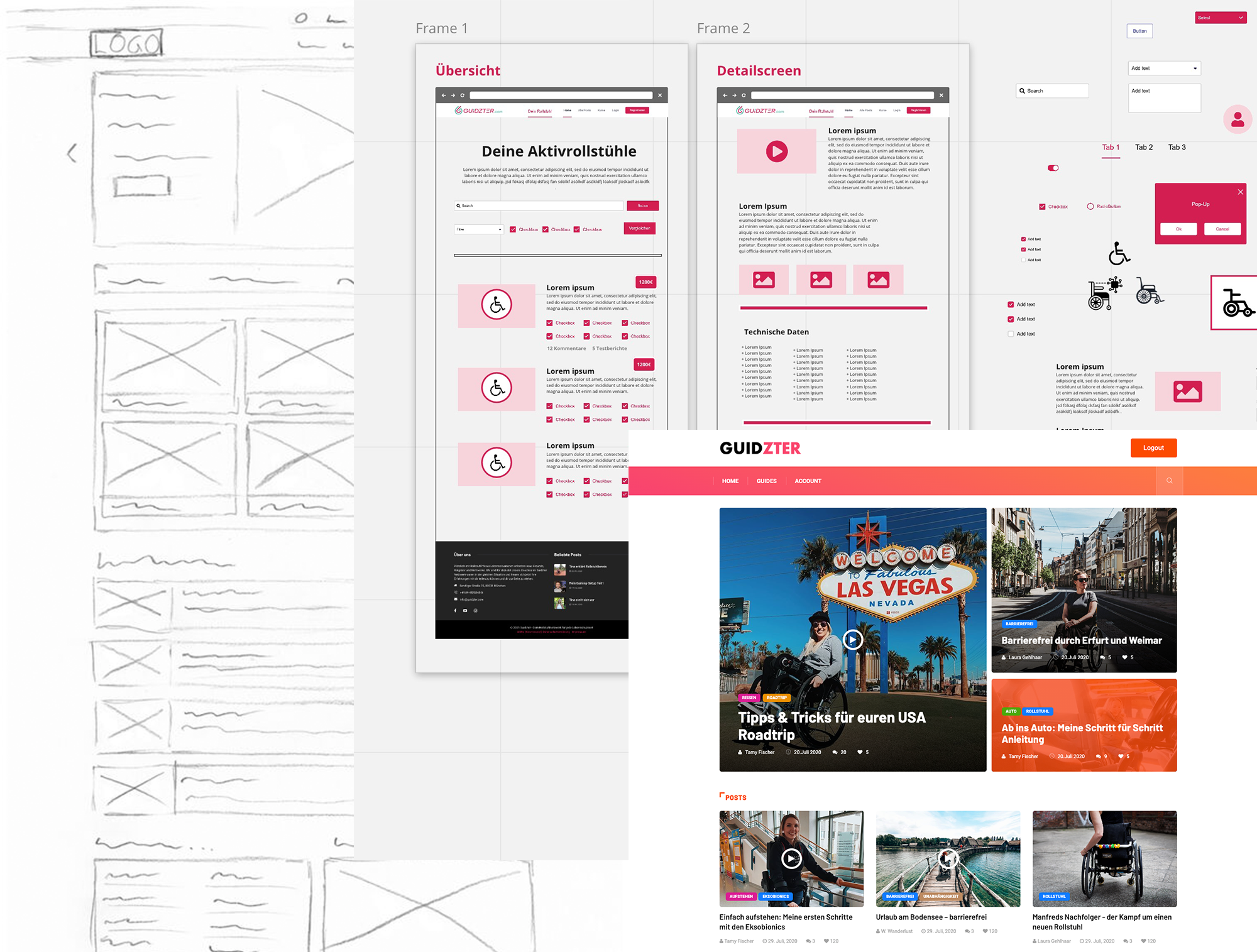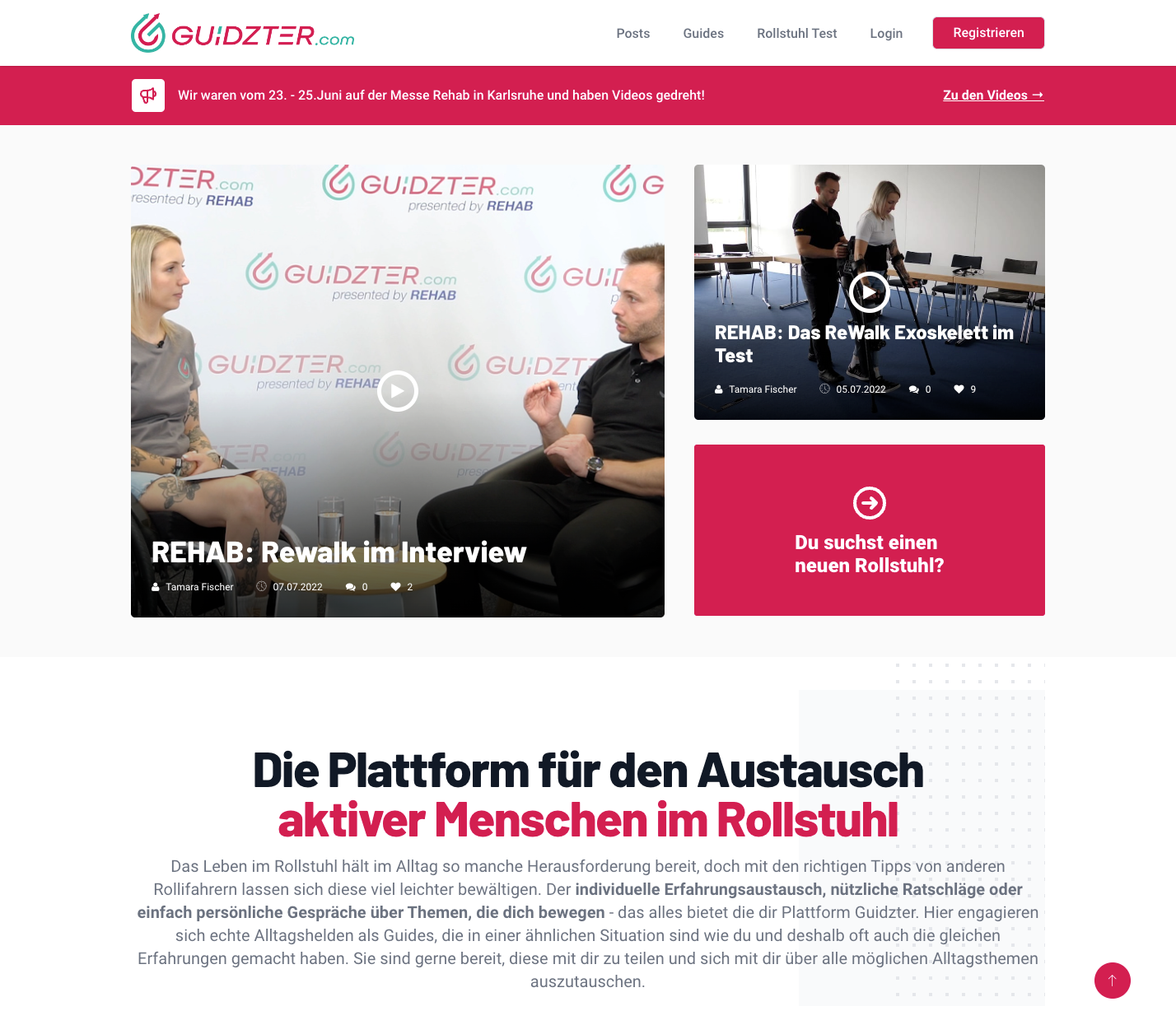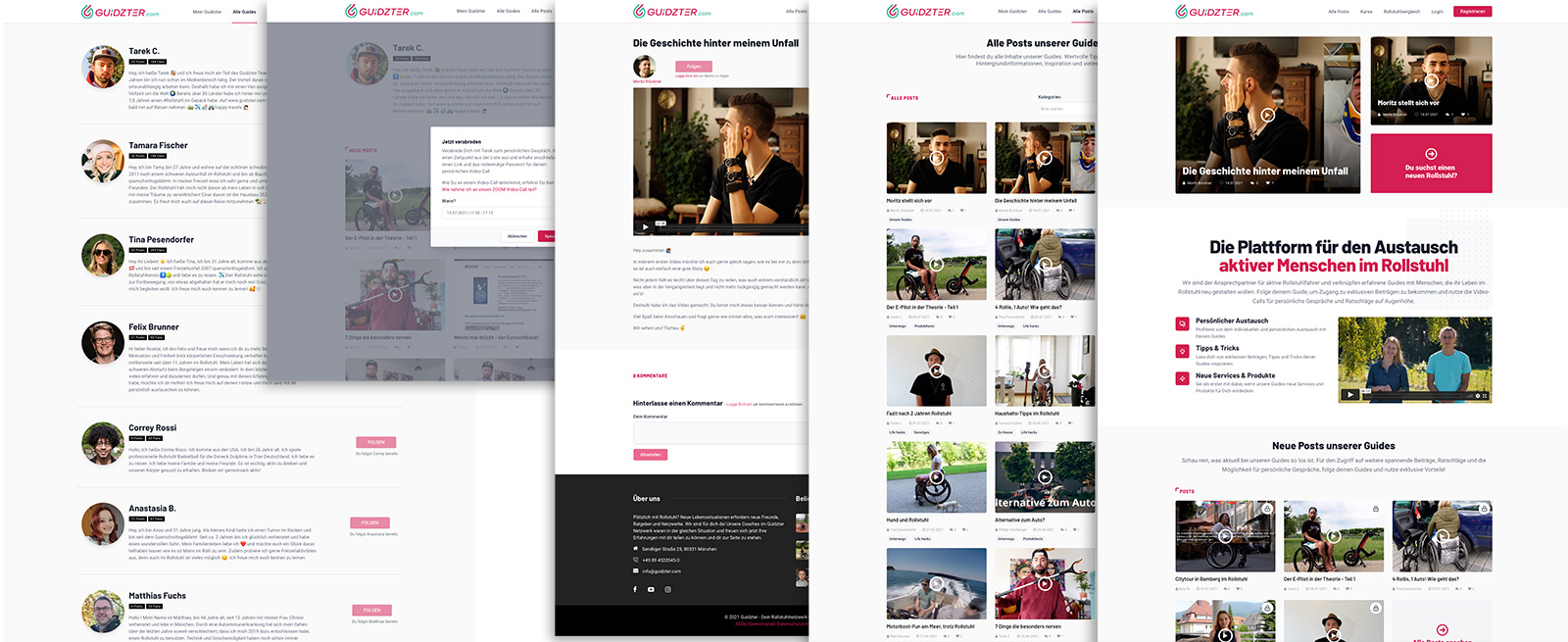Case Study: Guidzter
Let's get real! In this article I want to explain a typical prototyping journey in a real project: guidzter.com. I want to dig deeper into the question how prototyping helped us to understand and communicate. But also, and most importantly, how prototyping helped us to validate the most critical assumptions within our Business Model.

Markus Sorg
Business Design Prototyper
Content
1. Introduction
One of our clients, a big manufacturer of medical equipment like wheelchairs, approached us with the idea of building a new product for the target group of "active wheelchair users". We startet a Business Design Sprint and dived right into the Discover Phase where we started interviewing our Target Group.
We identified several golden nuggets, but one stood out to us: There is absolutely no guidance when you get into the wheelchair the first time. Imagine the following situation: You have an accident and you will be a paraplegic now. You will sit in a wheelchair from now on. The rest of your life. You get out of the hospital and have to (re-)learn everything. But there is no help. You have to learn it on your own. Step by step. That's where the team developed the following idea in the Design Phase of the sprint:
We build an online-platform from wheelchair users (guides) for other wheelchair users (rookies). A place where wheelchair users can share their knowledge, help, learn from - and inspire each other.
The idea of guidzter.com was born.
2. Prototyping in the Design Phase

We knew that we want to build an online platform for wheelchair users. But we had no clue how this platform could look like. Is it only video? Or text? Or both? What about additional content like downloads? We were very fuzzy and unclear how we could approach this whole platform.
As you already know, prototyping helps to align our different mental models, to communicate our ideas and get a better understanding of what we are trying to do. That's why we instantly startet prototyping: We did scribbles, mockups and developed a first Landing Page. Right after the Design Workshop. This helped us to get a better understanding of each other and helped us to develop a very concrete and well aligned idea of the platform. Working on these prototypes also kept the spirit within the team high and all of us were very motivated to keep going.
After these first prototyping sessions, it became very clear how this platform can look like and which features we need. To be honest, we were quite satisfied with the results and everybody in the team believed that this could work. We were convinced. The next step was to convince our Sponsor. We used the Landing Page to very vividly communicate our idea to him and it was a big success. Her understood very quickly what our vision is and what we are trying to achieve. We also explained to him what our most critical hypotheses are and what kind of experiments we want to do to test them.
He had everything he needed to know and he gave us the confidence to move on.
3. Prototyping in the Validate Phase

In the Validate Phase of our project, we thought about the biggest uncertainties in our Business Model. It became quickly clear that we need good, helpful and inspiring content, users on the platform and a way to make money. We broke it down to these four main testable hypotheses we need to test to make the idea work:
We believe, that our selected guides are able to produce interesting video content which other wheelchair users will view and enjoy on guidzter.com (measured via views, social media likes and comments).
We believe, that if the guides share their content on their own social media channels, we are able to convert at least 8% of these users as registered users into our platform.
We believe, that our content and our "SEO-game" is that good that we can position our platform on page one of google for relevant keywords like "rollstuhl community" (DE) to drive our own user-growth.
We believe, that we can monetise the whole platform and it's users that a guide can generate at least 10k€ income per year.
If you think about these hypotheses, they built upon each other. We need good content which people like (#1). This will help us to generate registered users (#2 + #3). And finally, we need to find a way to make money with these users (#4).
Ok...but how do we test these hypotheses? What are the experiments we need to do? That's what we came up with:
Experiment for Hypothesis #1
We selected five guides who were interested to work with us, bought some cameras and let these guides do some videos on topics they are interested in. We also extended our Landing Page with a video section where you could watch these videos (YouTube style). The guides shared these videos on their social media and we measured how much traffic we get on our site. The results were encouraging and we learned that our selected guides are able to produce interesting content which people like.
Hard facts: 18 videos, 35 comments and 840 likes.
Experiment for Hypothesis #2
To see if we are able to convert our viewers into registered users on our platform, we developed some more functionality: Rookies can now register and follow guides. We startet exactly measuring the conversion rates and learned that we were able to convert our viewers to registered users with the conversion rate we wanted to achieve.
Hard facts: 250 newly registered users on the platform. >8% conversion rate.
Experiment for Hypothesis #3
We constantly produced new content and gained more users on a daily basis. We also SEO-optimized our page and constantly improved our google rankings. Up to the point where where we had the top-positions on google for our targeted keywords. That helped us to generate our own organic growth via other channels than social media activities by the guides.
Hard facts: Google rank #2 for the keyword "rollstuhl community" (DE).
4. Building a Lean Offering

In the Validate Phase we learned that we are onto something here. But now comes the tricky part: How can we monetise our platform (see hypothesis #4)? It was very obvious for us that we need to expand our prototype into a first Lean Offering that we are able to test our ideas for monetisation. We built some more features to increase the engagement within the platform like "personal video-calls with guides" and comments. We also worked on a new design to make the site look more "professional".
Monetisation idea #1: Premium courses
Our first idea to generate revenue was to do "premium courses". All our guides have some kind of special interests. For example, one of our guides is heavy into sports and a semi-professional wheelchair tennis-player. Our idea was, that she does a "fitness course" via zoom and users will pay for it. We sat down and thought about how we can test this with the least amount of effort.
We designed the course with her, prototyped a little course page within the platform, integrated stripe for payment and accepted our first payments. Exciting.
Result: We actually earned our first revenue, but the whole course wasn't that successful.
Monetisation idea #2: Affiliate
Ok, what else could work? We already had a lot of test videos of wheelchairs in the platform (wheelchair users love to talk about their equipment). What if we try to play the affiliate game? Let's built up a database of wheelchairs with facts and images, make them searchable and filterable, link our test videos of the guides, play our SEO-game and earn money through affiliate with wheelchair manufacturers and dealers.
Result: Well, that didn't work well either.
Monetisation idea #3: Cooperations
Th next idea came to us. We already created some visibility in the market with our platform. That's why a big german "medical equipment fair" wanted to cooperate with us. They see our platform as an online extension to their fair into the digital space. This makes sense, right? Their fair is only three days a year, our platform is 24/7 on 365 days a year. That's a perfect fit for us and for them. We developed a dedicated page within the platform for the fair where we showed videos and additional content. They built us a huge presence on their fair where we could show our platform and the guides.
Result: We helped the fair and their exhibitors to generate visibility in our community. We made valuable connections with manufacturers and dealers and we did some sponsored videos. This was a huge success. For us and for them.
Monetisation idea #4: Payed content
Through our cooperation with the fair we made some connections with manufacturers of all kind of equipment related to wheelchair users. Some of them liked what we did and we were asked to produce payed videos for them where we test their equipment and talk about it on our platform.
Result: This worked very well up to the point where a guide is close to make a big deal to produce some videos for one of the customers. Wow!
5. Conclusion
Like you can see in this concrete example, prototyping is a very effective and valuable way to find your way to first revenue. There is no shortcut, most of the time you have to do a lot of small, and sometimes bigger experiments to test your most critical hypotheses. It took us some iterations to find a sustainable business model for this idea. Especially monetisation is tricky and you have to test what works. Nobody can tell you in advance if "premium courses" or "affiliate" will work. You have to test this in the field with allowing as much as reality as possible. Obviously, this may take more than one iteration of a Business Design Sprint.
But you can do that, most of the time, with not that much effort. For example, prototypically implementing payment within your site and build a Landing Page for your monetization idea is done in a couple of days - not months.
